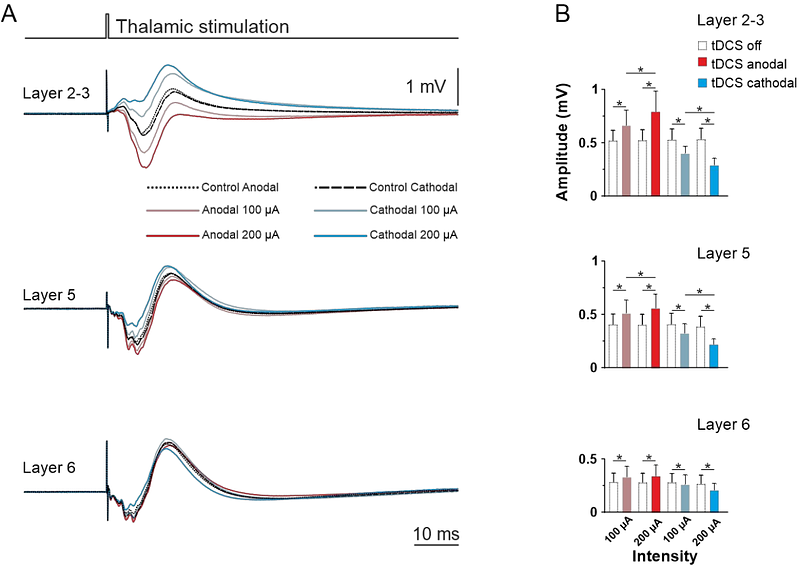An in vivo model for transcranial direct current stimulation of the motor cortex in awake mice.

An in vivo model for transcranial direct current stimulation of the motor cortex in awake mice.
Sanchez-Leon, C. A.; Reyes-Velasquez, P. A.; van Thriel, C.; Nitsche, M. A.
AbstractTranscranial direct current stimulation (tDCS) is a non-invasive brain stimulation technique mainly used in humans, in which weak direct currents are applied over the scalp to alter cortical excitability and induce neuroplasticity. Previous studies have demonstrated the value of tDCS for modulating sensory, motor, and cognitive functions, nevertheless, knowledge about how externally applied electric fields affect different components of neuronal networks is still incomplete, and in vivo animal models, which are required for a deeper understanding, are not fully developed. To evaluate the impact of tDCS on cortical excitability, many human experiments assess motor evoked potentials elicited by motor cortex (M1) stimulation. To develop a related in vivo animal model, we recorded electrical activity in M1 of alert mice during and after administration of tDCS over M1. M1 excitability was chronically recorded from layers 2-3, layer 5 and layer 6, evoked by stimulation of the ventral lateral nucleus of the thalamus (VAL). M1-tDCS was applied at 100 and 200 A for 5 s to test the acute effects on neuronal excitability, and for 15 min to induce after-effects. Acute M1-tDCS increased and decreased the amplitude of VAL-evoked potentials in a polarity-, layer- and intensity-dependent manner. For 15 minutes of anodal or cathodal tDCS, a similar polarity- and intensity-dependent modulation of VAL-evoked potential amplitudes during the 15 minutes of stimulation was observed. After tDCS was switched off, the highest intensity of anodal stimulation induced a significant excitability enhancement during at least two hours after stimulation, whereas the after-effects of cathodal tDCS were less pronounced. The current study demonstrates the feasibility of a mouse model of M1-tDCS to accomplish similar modulatory effects of tDCS on cortical excitability as observed in human experiments. A proper adjustment of tDCS parameters, as compared to application in humans, is however required to obtain these translational effects.